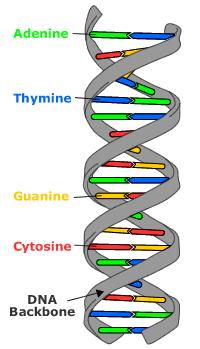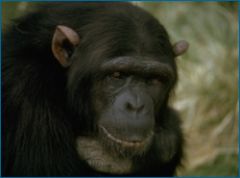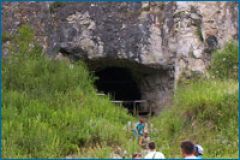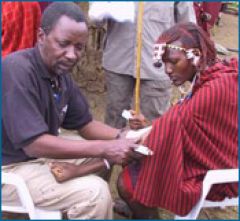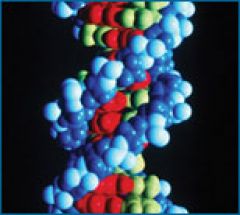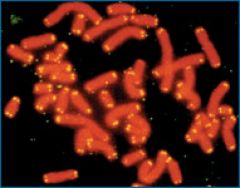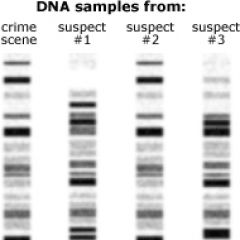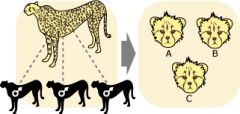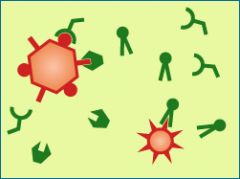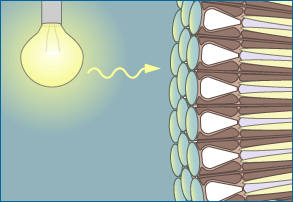Search by:
Found 21 resources:
The causes of mutation with Molly Przeworski and Felix Wu
Grade Level(s):
- 13-16
Source:
- UC Museum of Paleontology
Resource type:
- Classroom activity
Time: 1.5 hours
Overview
In this article (and the linked assignments and student readings), students examine and interpret data that Molly and Felix used to study the causes of mutations that matter most for evolution. Use the tabs at the bottom of the feature to find related videos, assignments, and lessons to build this example into a lesson sequence on mutation.
Pea taste
Grade Level(s):
- 13-16
Source:
- Evo-Ed
Resource type:
- Case study
Time: One to two class periods
Overview
This case study in the form of a set of PowerPoint slides examines the evolution of the wrinkled pea from its ancestral round pea shape.
Mouse fur color
Grade Level(s):
- 13-16
Source:
- Evo-Ed
Resource type:
- Case study
Time: One to two class periods
Overview
This case study in the form of a set of PowerPoint slides examines the evolution of light fur in beach mice from the molecular level up to the population genetics level.
High altitude adaptations: The work of Emilia Huerta-Sánchez
Grade Level(s):
- 13-16
Source:
- UC Museum of Paleontology
Resource type:
- Research profile
Time: 30 minutes
Overview
This research profile follows statistician and population geneticist Emilia Huerta-Sánchez as she studies the adaptations that allow Tibetan highlanders to live 13,000 feet above sea level without developing altitude sickness.
Evolution connection: DNA replication
Grade Level(s):
- 13-16
Source:
- UC Museum of Paleontology
Resource type:
Time: 5 minutes
Overview
This short slide set explains the fidelity of DNA replication in evolutionary terms. Save the slide set to your computer to view the explanation and notes that go along with each slide.
Evo in the news: Superbug, super-fast evolution
Grade Level(s):
- 9-12
- 13-16
Source:
- UC Museum of Paleontology
Resource type:
- Evo in the News article
Time: 20 minutes
Overview
Methicillin-resistant staph infections now contribute to more US deaths than does HIV. This news brief from April of 2008 explains the quirks of bacterial evolution that make them such a threat.
Evo in the news: Seeing the tree for the twigs
Grade Level(s):
- 9-12
- 13-16
Source:
- UC Museum of Paleontology
Resource type:
- Evo in the News article
Time: 15 minutes
Overview
Recent research has revealed that, in at least some ways, chimpanzees have evolved more than humans have. This news brief from May 2007 delves into this finding further and, in the process, debunks common misperceptions of human evolution.
Evo in the news: Making sense of ancient hominin DNA
Grade Level(s):
- 9-12
- 13-16
Source:
- UC Museum of Paleontology
Resource type:
- Evo in the News article
Time: 10 minutes
Overview
In March 2010 German researchers announced that they had managed to extract DNA from the 40,000 year old fossil bone from a child discovered in a Siberian cave and that it didn't match up to the known genetic sequences of either humans or Neanderthals! This news brief examines the evidence in more detail and considers what that evidence might — or might not — mean about such claims.
Evo in the news: Hotspots for evolution
Grade Level(s):
- 9-12
- 13-16
Source:
- UC Museum of Paleontology
Resource type:
- Evo in the News article
Time: 15 minutes
Overview
Why are there so many different species in the tropics? This news brief, from June 2006, suggests why: warmer weather may be linked to a quicker pace for evolution.
Evo in the news: Got lactase?
Grade Level(s):
- 9-12
- 13-16
Source:
- UC Museum of Paleontology
Resource type:
- Evo in the News article
Time: 20 minutes
Overview
The ability to digest milk is a recent evolutionary innovation that has spread through some human populations. This news brief from April 2007 describes how evolution has allowed different human populations to take advantage of the nutritional possibilities of dairying and links evolution with the prevalence of lactose tolerance among people of different ethnicities.
Evo in the news: Ghosts of epidemics past
Grade Level(s):
- 9-12
- 13-16
Source:
- UC Museum of Paleontology
Resource type:
- Evo in the News article
Time: 20 minutes
Overview
HIV and malaria both constitute global health threats, respectively affecting more than 30 million and 200 million people worldwide. This news brief from October 2008 describes new research that reveals an unexpected evolutionary link between the two.
Evo in the news: Genealogy enthusiasts mine DNA for clues to evolutionary history
Grade Level(s):
- 9-12
- 13-16
Source:
- UC Museum of Paleontology
Resource type:
- Evo in the News article
Time: 15 minutes
Overview
This news brief, from November 2007, turns an evolutionary lens on businesses that use DNA for genealogy research and, in the process, illuminates what their genetic tests really track.
Evo in the news: Evolution in the fast lane?
Grade Level(s):
- 9-12
- 13-16
Source:
- UC Museum of Paleontology
Resource type:
- Evo in the News article
Time: 20 minutes
Overview
Have humans, with all of our technological advances, exempted ourselves from further evolution? Perhaps not. This news brief, from February 2008, examines genetic research which suggests that human evolution may haved actually accelerated in our recent history.
Evo in the news: Evolution at the scene of the crime
Grade Level(s):
- 9-12
- 13-16
Source:
- UC Museum of Paleontology
Resource type:
- Evo in the News article
Time: 15 minutes
Overview
This news brief, from March 2006, describes how DNA fingerprinting is being used to prosecute and exonerate the accused. DNA fingerprinting relies on the processes of mutation and genome evolution.
Evo in the news: Cheating cheetahs prosper
Grade Level(s):
- 9-12
- 13-16
Source:
- UC Museum of Paleontology
Resource type:
- Evo in the News article
Time: 15 minutes
Overview
Biologists have discovered that female cheetahs consistently seek out multiple mates. This news brief, from July 2007, explains how the evolutionary implications of this behavior may help conservation efforts targeting these endangered animals.
Evo in the news: A chink in HIV’s evolutionary armor
Grade Level(s):
- 9-12
- 13-16
Source:
- UC Museum of Paleontology
Resource type:
- Evo in the News article
Time: 20 minutes
Overview
Medical researchers have spent billions of dollars and many decades trying to develop an HIV vaccine but have, thus far, failed. Why is an HIV vaccine so elusive? This news brief from March 2007 explains how HIV's rapid rate of evolution challenges medicine and describes a new discovery that may allow vaccine developers to sidestep that evolution.
Why the eye?
Grade Level(s):
- 13-16
Source:
- UC Museum of Paleontology
Resource type:
- Article
Time: 30-45 min
Overview
Eyes are something of an icon of evolution. How did such an integrated, multi-part adaptation evolve? While many different animals have complex eyes, untangling their evolutionary history reveals both remarkable diversity and surprising similarity.
Webcast: The science of evolution
Grade Level(s):
- 9-12
Source:
- New York Times
Resource type:
- Video
Time: 10 minutes
Overview
Evolutionary biologist Sean Carroll introduces the field of Evo-Devo, using examples from fruit flies, butterflies, and icefish to explain how this research is transforming our understanding of evolution.
This video is available from the New York Times website.
Webcast: Selection in action
Grade Level(s):
- 9-12
- 13-16
Source:
- Howard Hughes Medical Institute
Resource type:
- Video Lecture
Time: 60 minutes
Overview
In lecture two of a four part series, evolutionary biologist David Kingsley discusses how just a few small genetic changes can have a big effect on morphology, using examples from maize, dog breeding, and stickleback fish.
This lecture is available from Howard Hughes' BioInteractive website.
Webcast: From butterflies to humans
Grade Level(s):
- 9-12
Source:
- Howard Hughes Medical Institute
Resource type:
- Video Lecture
Time: 60 minutes
Overview
In lecture four of a four part series, evolutionary biologist Sean Carroll uses the developmental genetics of insects to explain how old genes can learn new tricks and how this can help us understand human evolution.
This lecture is available from Howard Hughes' BioInteractive website.
Webcast: Fossils, genes, and embryos
Grade Level(s):
- 9-12
- 13-16
Source:
- Howard Hughes Medical Institute
Resource type:
- Video Lecture
Time: 60 minutes
Overview
In lecture three of a four part series, evolutionary biologist David Kingsley examines the original objections to Darwin's theory and shows how modern evidence supports the theory.
This lecture is available from Howard Hughes' BioInteractive website.




